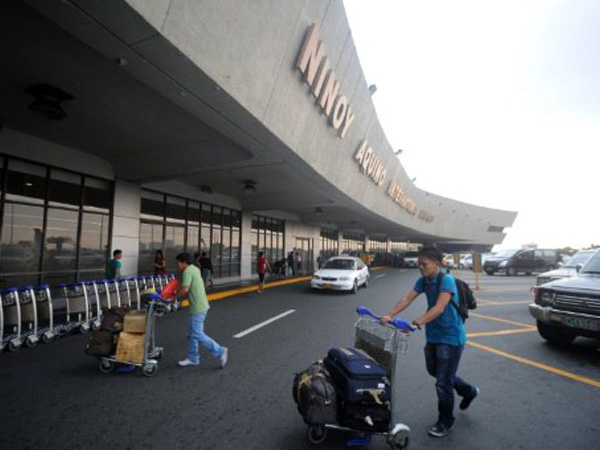The Ninoy Aquino International Airport (Naia) has yet to be dropped from the list of the world’s worst airports.
But that has not stopped officials of the Manila International Airport Authority (Miaa), the Department of Transportation and Communications-attached agency that operates Naia’s four terminals, from grinning ear to ear these days.
The reason for their celebratory mood: The Miaa’s favorable accomplishment report for 2011, which includes its positive income statement for the 12-month period.
The report, a copy of which was obtained by the Philippine Daily Inquirer, showed the agency’s gross revenue rose to P8.58 billion last year from P7.89 billion in 2010.
Of the 2011 total, P937 million will go to the national government, five-percent more than it got in 2010 which was P892 million.
On the other hand, the Miaa’s operating expenses in the two years went down to P4.43 billion from P4.93 million.
Last year, the agency’s net income from operations totaled P3.21 billion, an increase of P1.14 billion over 2010.
Miaa General Manager Jose Angel Honrado was also “pleased to report” that both flight and passenger traffic rose in 2011.
“For international operations, there was a substantial increase of 7.53 percent in flight movements (from 67,321 in 2010 to 72,390 in 2011). Passenger movements showed an increase of five percent (from 12.3 million in 2010 to nearly 13 million in 2011),” Honrado said.
For domestic operations, Terminals 2, 3 and 4 recorded a total of 145,353 flights, a 9.46-percent increase over the 132,786 flights in the previous year.
In 2011, a total of 16,582,798 domestic passengers went through the three terminals compared to 14,755,151 in 2010.
“The increase in flight and passenger figures in both international and domestic operations may be credited to marketing strategies of various airlines, such as interisland flights, convenient route schedules, great value fares and young aircraft fleets.”
Get off ‘worst’ list
In the annual report, the top Miaa official also cited other agency accomplishments, among them, the upgrading of 20 Smiths Heimann baggage X-ray machines; replacement of the Totem air handling units; the installation of flight information display system server software and workstations; more taxiway signs, and the renovation of nine toilets in Terminal 1.
Honrado expressed optimism Naia 1 would finally be dropped this year from the list of the world’s worst airports.
Last year, the Guide to Sleeping in Airports tagged Terminal 1 as the “world’s worst airport,” up from the interactive website’s assessment of it in 2010 as the fifth worst airport in the world and the worst in Asia.
The sorry state of its toilets, among other things, earned for Naia 1 the dubious distinction of being voted by travelers who went online as the world’s worst airport.
Frommer’s, the travel guide publisher, was a tad kinder, tagging the decades-old facility the “second worst” airport, right behind New York’s John F. Kennedy International Airport.
‘Old and rehashed’
Dante Basanta, Naia 1 manager, dismissed Frommer’s depiction of the terminal as “old and rehashed.”
He said Miaa had “already done several improvements in the past. But we will definitely see a new Terminal 1 by the end of 2012.”
Malacañang has approved the release of P1.16 billion for the rehabilitation and upgrade of Naia 1 to a “world-class transport facility.”
The terminal retrofitting began last month with the pullout of the arrival lobby escalator that leads to the departure level above, which created space for more passenger movement.
The refurbishing would take up to a year and a half, Honrado said.
He said there were plans to move the banks and Duty Free shops from the arrival lobby and Bureau of Customs area to provide more space for arriving international passengers.
At least P20 million of the rehabilitation budget would go to the repair of the terminal’s 72 toilets, Honrado said.
The Miaa has allotted P500 million for the architectural, engineering, interior design and structural work to improve the terminal’s internal facilities.
Another P340 million has been set aside for retrofitting to improve the structural integrity of the building and make it compliant with the National Structural Code of 2010.
To address runway congestion, P300 million will be used for the construction of a rapid exit taxiway.
The facility’s long-term plan also provides for moving some of the airlines currently flying out of Terminal 1 to the newer Terminal 3.
7.3-M passengers
Terminal 1 was originally designed to serve 4.5 million passengers yearly, but this figure has grown to 7.3 million.
Flag-carrier Philippine Airlines is based at Terminal 2, while Cebu Pacific and Air Philippines flights emanate from Terminal 3.
Terminal 4, or the old Manila Domestic Terminal, is the base of smaller carriers Zest Air and Seair.
In an earlier interview, Honrado appealed to critics of the airport to stop calling it the worst in the world.
He said the Miaa “has been rehabilitating the airport since last year.”
“Even before the alleged online survey results came out, we were already rehabilitating the facility,” he said.
Originally posted: 1:50 pm | Sunday, February 19th, 2012


